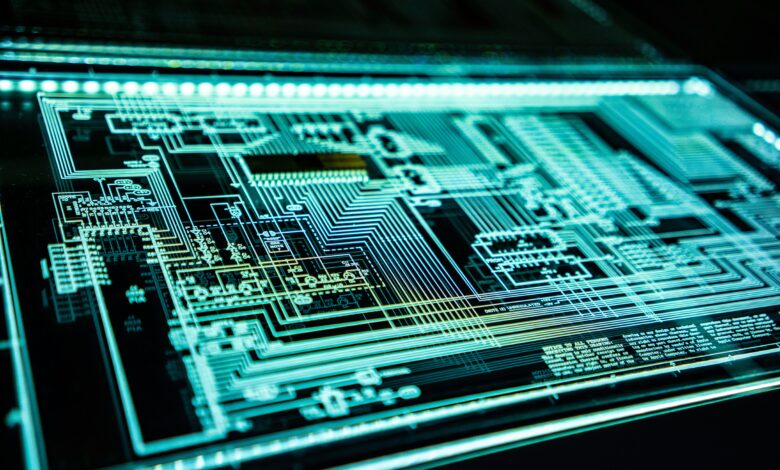
Technology and its impacts are now a significant part of our daily lives. Forty percent of the world’s population has internet access, and they are free to utilize the advancements technology has made. But do you know how it is damaging, too? From personal data breaches and phishing scams to malware attacks, the threats are growing alongside technological progress.
This is where cybersecurity steps in—its importance in protecting our sensitive information online cannot be overstated. Governments and organizations are continually developing tools and regulatory frameworks to safeguard data in an increasingly interconnected world.
But what is cybersecurity, and what are its threats you must know? Today’s guide is all about cybersecurity and its importance. If you want to fully equip yourself with authentic data and safeguard your information online, continue reading this blog.

What is Cybersecurity?
In simple words, cybersecurity is the practice of protecting your computer systems, networks, and programs from digital attacks. It will help the internet user safeguard their sensitive information and access it without interruption. According to the data, there were 2,365 cyberattacks in the year 2023. Previously, victims of cyberattacks were at least informed, but in today’s digital age, you will not even get a notification saying, “Your account is hacked.”
What are Some Common Cybersecurity Threats?
Following are a few common cybersecurity threats you must know:
Data breaches
This type of cybersecurity threat happens when an unauthorized person gets access to sensitive information stored by an organization. Did you know that back in 2013, 3 billion Yahoo users’ accounts were hacked, which was one of the biggest data breach attacks?
Malware Attacks
Malware attacks, commonly known as malicious software, involve a range of harmful programs designed to infiltrate and damage your computer software. These include viruses, trojans, worms, and ransomware. At any given time, 4.1 million websites are infected with malware, which is a huge chunk.
Phishing Scams
This is one of the common cyber attacks, which includes tricking people into revealing their sensitive information. Now, this is connected to the malware attack, too. Individuals might receive messages, deceptive emails, and other communication platforms where they are deceived into downloading malware. There are four main types of phishing scams: whaling, vishing, email phishing, and spear phishing. According to data, 74% of accounts that are hacked were initiated by phishing.
Attack on social engineering
This type of cyber attack involves manipulating individuals to let their personal information out of their systems, compromising security measures. It is usually targeted at teenagers and children, as they are easiest to deal with and easily manipulated. Social engineering attackers will exploit human psychology or create fake scenarios of the victims’ interests to gain their trust and then have their hands in unauthorized data from their systems.
How to Protect Your Personal Data?
In this digital world, where a vast amount of sensitive information is shared online every minute, it is important to save your data. Following are a few tips for you to safeguard your personal information:
Use Strong Passwords for all of your Accounts
You can save your information from going into the hands of unauthorized access by generating and using strong and unique passwords. You can look for so many password managers online that can give you suggestions for generating difficult-to-guess passwords. Moreover, you can secure your sensitive documents online with the help of a few security software programs or even an electronic signature generator.
Authorize Two Factor Verification for the Extra Layer
Enabling 2FA will require users to provide a second variant of verification alongside their initial password. Have you ever noticed Gmail sending you another verification notification while you log your account into a different device? That is simply the procedure of two-factor verification, which enhances security and eliminates the risk of unauthorized access.
Watch out for Suspicious Links and Emails
Did you know that 91% of cyber-attacks have been successful to date because of phishing emails? Keep an eye on suspicious bank or utility company emails for confirmation. But you do not have to click every link you receive via email or messages. These cybercriminals are sneaky and often compose phishing scams because it is easier to fool around.
Make sure your Wi-Fi network is Secure.
It is very common for us to connect our smartphones with free public Wi-Fi networks whenever they are available. But did you know they are one of the unsafe Wi-Fi connections that don’t have good security measures? In specific premises, if you are connecting to free Wi-Fi that others are also using, it can let others easily access your activity. Always make sure that you connect your phone with a secure, password-protected Wi-Fi network.
Always keep your software updated.
When you are regularly updating your software, there is a 70% lesser chance of your device being hacked or attacked. Enable automatic software updates to your system and application, which will help the device remain protected against the latest cyber threats we have already mentioned above. Also, make sure your system doesn’t have a high volume of traffic or get ready for a distributed denial of service (DDoS) attack. In this, the attacker uses multiple devices to flood a target system, which renders it inaccessible to legitimate users.
Conclusion
It is becoming more and more difficult for internet users to protect their networks and sensitive data. Adopting cybersecurity in this era has become a need as it will safeguard your system and network against all those threats. Make sure you have physical control of your devices, and you are not oversharing on the internet. Be cautious when using public wifi connections or avoid using them. Refrain from inserting any unknown USBs into your computer system or laptops. By following all these tips and tricks, you can make full use of cybersecurity and secure your information and sensitive documents.




